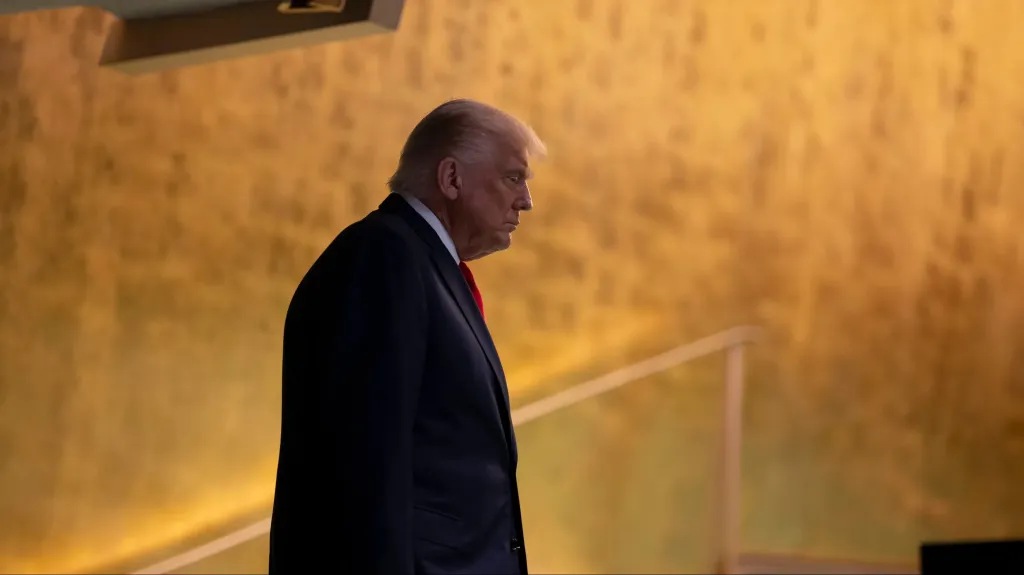S&P 500 squandered gains and went negative after Trump's new trade threats to China

The main U.S. stock index S&P 500 declined at the end of trading on Tuesday, although during the day it was able to recover the fall incurred in the morning and go into the plus side. Almost before the close of trading, U.S. President Donald Trump threatened China with new trade restrictions, which again caused concern among investors.
Details
- On October 14, the broad market index S&P 500 ended in the negative zone, down 0.16%. During the day, the index was falling, falling by 1.5% at the low, and rising - adding 0.4% at the high.
- The Nasdaq Composite Technology Sector Index lost 0.76% on the day. It was down 2.1% at the moment.
- In contrast, the blue-chip index Dow Jones Industrial Average added 0.44% on Tuesday. Although during the session it declined by 1.3%. The leader of growth in the Dow was Caterpillar.
- The Russel 2000 index of small-capitalization companies rose 1.38%.
What impacted the stock
US President Donald Trump again lashed out at China on Tuesday night, writing in Truth Social that Beijing's refusal to buy US soybeans is an "economically hostile act." Trump said Washington was thinking of "stopping doing business with China related to vegetable oil and other elements of trade."
US President Donald Trump again lashed out at China on Tuesday night, writing in Truth Social that Beijing's refusal to buy US soybeans is an "economically hostile act." Trump said Washington was thinking of "stopping doing business with China related to vegetable oil and other elements of trade."
The Cboe VIX volatility index - the so-called "fear index" of Wall Street - at some point exceeded the level of Friday's closing, which signaled the return of anxious sentiment in the market, writes CNBC. This manifested market participants' fears that a quick resolution of the trade conflict with China will not work out, prompting them to hedge positions in case of future losses, the channel notes. VIX rose above 22 points on Tuesday, reaching a four-month high, but by the middle of the session fell to the mark of 20.
In general, the session on October 14 was characterized by volatility. Trading began with a drop due to China's decision to tighten control over global logistics: it imposed sanctions against five American subsidiaries of South Korean shipbuilder Hanwha Ocean, CNBC reports. On the US side, US Trade Representative Jamison Greer said that the timing of the additional 100% duties Trump threatened on Friday would depend on China's further steps. He emphasized that the duties could be introduced even earlier than November 1.
However, the major indices soon regained their positions, and the S&P 500 traded in a steady plus for most of the day. The statements of Fed Chairman Jerome Powell strengthened investors' hopes for a new interest rate cut in October due to signs of further weakening of the labor market.
What the analysts are saying
- "It's still completely unclear what the path to de-escalation of tensions between China and the U.S. might be by the end of the month, and I think the market is still trying to make sense of that," Rob Haworth, director of investment strategy at U.S. Bank Wealth Management, told CNBC. - This is one of the factors shaping the current market sentiment, even though today's [Citigroup, Wells Fargo, JPMorgan and Goldman] reports show the financial sector is feeling confident and consumer demand remains robust."
- "Since the issue of duties and trade has been the main cause of trouble for the stock market this year, developments in that area will be something everyone will be watching extremely closely," Matt Maley, chief market strategist at Miller Tabak, told Bloomberg.
- "As Fed Chairman Powell noted, there are no easy decisions for the Fed right now," Scott Helfstine, director of investment strategy at Global X, told Bloomberg. - Cutting rates could accelerate inflation, and keeping rates high carries risks for the labor market." According to Helfstine, the Fed is still likely to cut rates in October and December, but investors should be prepared for different scenarios as Powell tries to maintain room for maneuver.
This article was AI-translated and verified by a human editor
